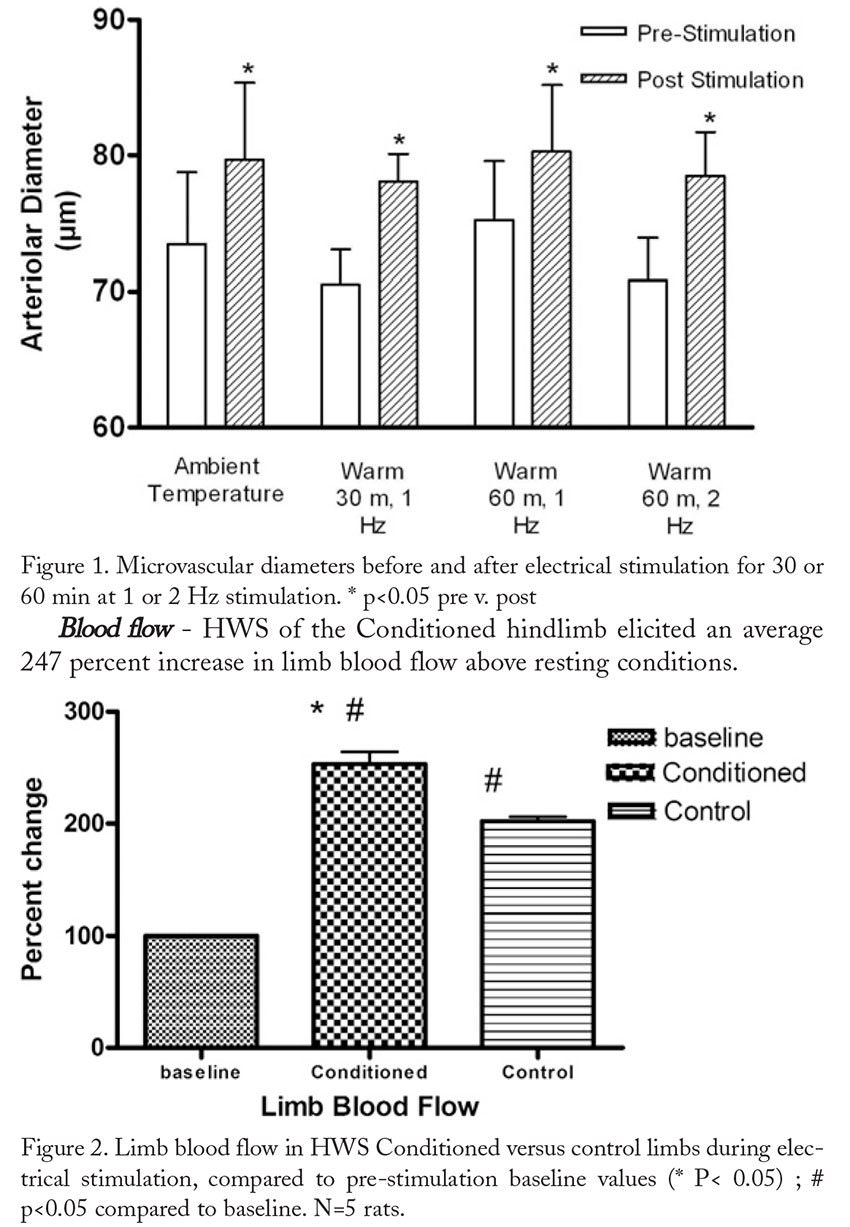Research Measures How H‑Wave Stimulation Effects Blood Flow
Findings Presented at the 6th Combined Meeting of the Orthopedic Research Societies
On Monday October 22nd at the 6th Combined Meeting of the Orthopedic Research Societies in Honolulu, HI a presentation was given on H‑Wave. Tom Smith, PhD. (Orthopaedic Surgery, Wake Forest University School of Medicine) presented his current research entitled:
The microvascular and hemodynamic mechanisms for the therapeutic actions of H‑Wave muscle stimulation.
The aim of this scientific animal research was to directly assess striated muscle microvascular responses to H‑Wave stimulation. In addition, the effect of repeated stimulation over a three week period on hind limb blood flow was assessed.
Research showed that H‑Wave treatment resulted in significant arteriolar vasodilation and increased blood flow to the limb by 200%. It was demonstrated that this microvascular response was mediated, at least in part by nitric oxide. When the limb was conditioned by daily (M-F) treatments for 3 weeks limb blood flow increased by 247%. This increase in blood flow in the conditioned limb suggests an increased vascular reserve available for augmenting perfusion in the limbs exposed to repetitive H‑Wave treatments. Further analysis showed that angiogenesis indeed occurred in the limbs that received repetitive H‑Wave treatments.
Paper No. 83. 6th Combined Meeting of the Orthopedic Research Societies

